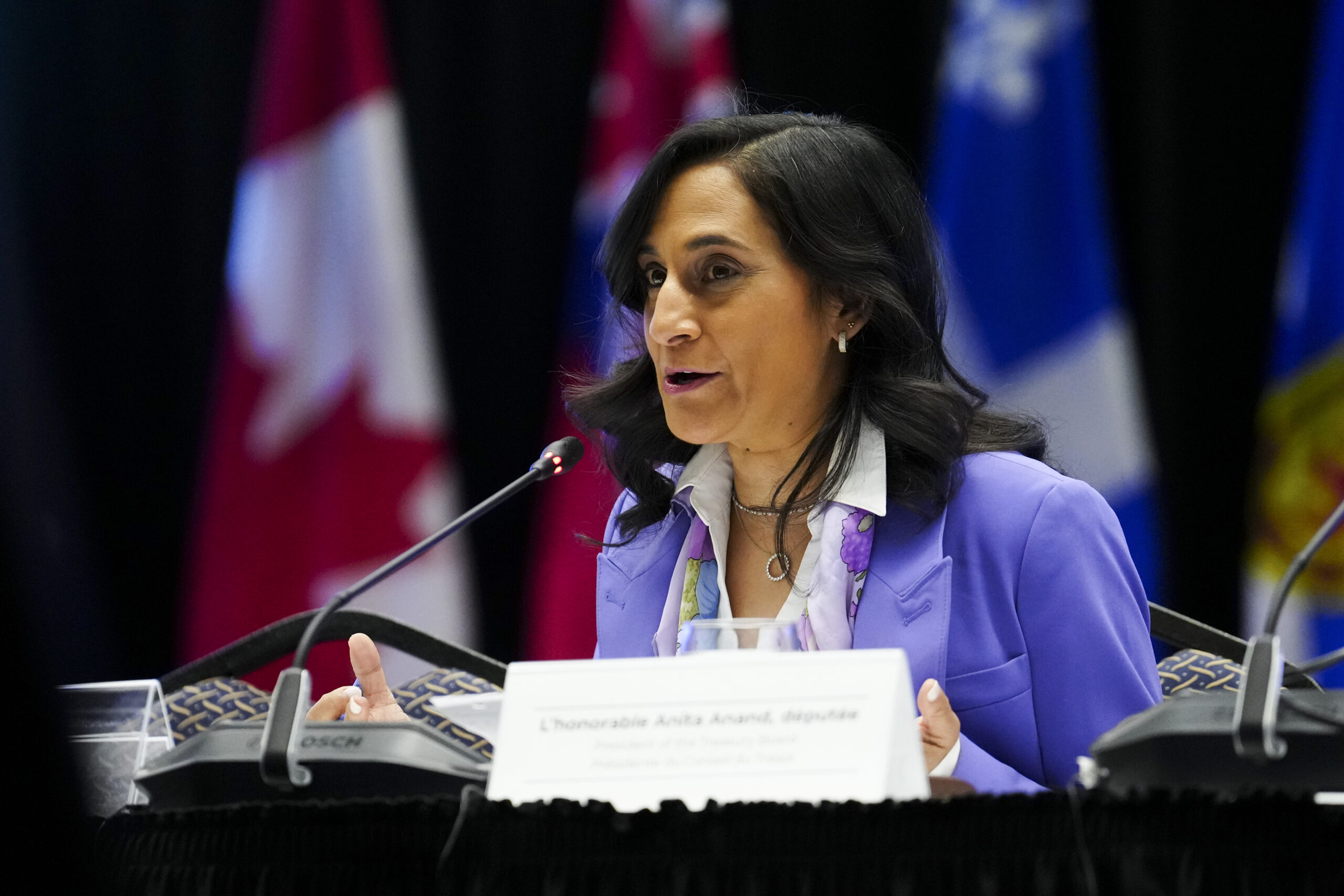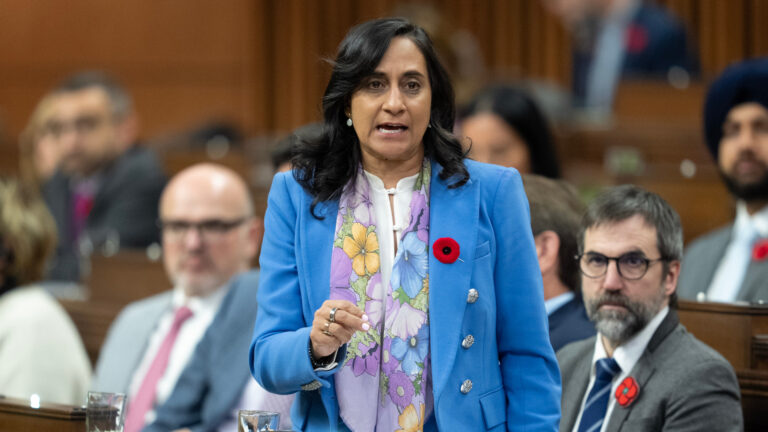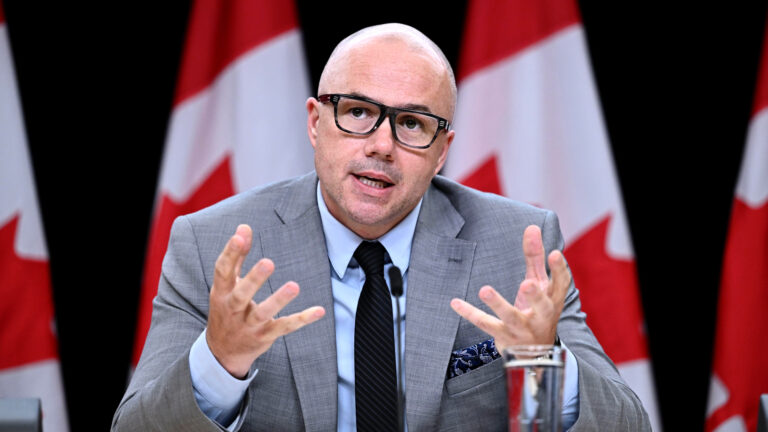This article was updated to include comments from Anita Anand and PSAC president Sharon DeSousa Thursday morning.
OTTAWA – Treasury Board President Anita Anand will propose legislative changes to the public service pension plan in the fall so border officers and hundreds of other workers can retire with pensions after 25 years of service.
The move comes after a long-awaited confidential report from the pension plan’s advisory committee. Sources say the report recommended early retirement benefits – known as “25 and out” – be extended to frontline border guards, firefighters, as well as safety and enforcement workers such as corrections officers, paramedics and firefighters in the Yukon, Northwest Territories and Nunavut.
Anand announced Thursday she will adopt the recommendations while also extending the new retirement option to search and rescue technicians and members of the Parliamentary Protective Service, which was created to handle security after a gunman stormed Parliament Hill in 2014.
Anand stressed the “magnitude” of the decision for workers in demanding day-to-day jobs, such as those battling forest fires and floods. They also require specialized training and certification.
“These occupational groups have an absolutely critical role in promoting and protecting the safety and security of the population of our country,” she said.
All told, more than 8,000 employees could be eligible. Anand said she is open to considering it for other public safety workers. The decision is expected to cost $175 million up-front and $21 million a year.
The proposed amendment would mark the biggest change in the public service pension plan since the Harper government’s pension reforms, which increased the retirement age for bureaucrats and made them pay higher contribution rates for their benefits.
A generous plan gets more generous
Pension experts say the change bucks the trend when many employers are trying to reduce the cost of pension obligations and shift away from defined benefit plans. The public servant defined-benefit plan is one of the most generous in the country.
“It’s completely at odds with current trends,” said Alexandre Laurin, director of research at the C.D. Howe Institute.
But it is also a recognition that public safety employees, especially first responders, have stressful and physically demanding jobs that can affect their health. Corrections officers, the RCMP and other police are usually able to retire after 25 years.
Border officers have been lobbying for years for ‘25 and out’ as part of their push for pay parity with the RCMP.
The Public Service Alliance of Canada (PSAC), which represents border officers, argue their work is dangerous and physically taxing. After years on the job, many end up suffering illnesses or injuries that leave them unable to meet the standards for carrying a firearm required for frontline duty.
The border officers’ push for pension reform loomed over the latest round of collective bargaining.
After a long standoff and several threats of strike action, PSAC and Treasury Board finally reached a tentative agreement this week, averting a strike that could have snarled border travel and trade and hit the economy.
Parliament decides
The problem is pensions can’t legally be negotiated at the bargaining table. Under the law governing collective bargaining, anything that requires a legislative change is simply a no-go and outside the scope of bargaining.
Pension plans are negotiable in the private sector, but not in the federal sector. They are controlled by government and require amendments to the Public Service Superannuation Act and the Income Tax Act, as well as changes to regulations.
But unions can consult and lobby for pension reform, as they have been doing for several years.
Mona Fortier, the former president of the Treasury Board, promised to look at the issue and the technical work needed to make the change. It was referred to the public service pension advisory committee, which presented Anand with a confidential report and its recommendation last December.
The union also argued the retirement benefits they are seeking are affordable because the post-pandemic economy is recovering and the pension plan is racking up a surplus.
Although pension reform is not negotiable, Anand can promise to propose amendments to existing pension legislation, as she did Thursday.
Such an agreement, however, must be completely separate from negotiations.
Anand’s announcement came Thursday just before PSAC and its component union, the Customs and Immigration Union, were expected to reveal details of the tentative deal for border officers and call a ratification vote.
For workers, pension reform was the big issue in these talks. Although pensions were not officially on the table, PSAC may have backed down on other demands, including big wage increases, with assurances pension reform is coming.
PSAC President Sharon DeSousa said nearly a decade of “hard work and advocacy has finally paid off” and frontline workers will have a “dignified retirement” like other public safety workers.
Will reform come before an election?
A wrinkle for the union is that legislation takes time and may not pass by the time an election is called. It’s unlikely that a possible Conservative government – whose election PSAC is already campaigning to stop – would embrace the reforms.
The C.D. Howe Institute has long raised questions about the long-term affordability of the public service plan for taxpayers. A big complaint is that public servants don’t contribute enough to the plan to cover what they will collect in the future. C.D. Howe argues the government’s accounting practices “understate this burden and the risks these plans create for taxpayers and, potentially, for the employees themselves.”
The public service plan is also the only large public sector plan that isn’t jointly managed with employees. This means the government is on the hook if the plan runs a deficit.
Treasury Board’s brief to the Public Interest Commission, which was created to find common ground in the labour dispute with the border guards, highlights the superiority of public servants’ defined-benefit pensions, which are rapidly disappearing in the private sector.
The submission notes that most Canadians aren’t prepared enough for retirement with only about 14 per cent of older workers feeling confident about their savings.
In the public sector, however, 88 per cent of public-sector workers have pension plans. That compares to 22 per cent of private-sector workers. They also retire earlier – typically 2.4 years before private-sector workers. Federal pensioners are also blessed with an indexed plan that protects them from the rising cost of living.
This article was produced with support from the Accenture Fellowship on the Future of the Public Service. Read more of Kathryn’s articles.












